Photo Life with Kitamura Camera│Vol.1 A rare and special place filled with Leica models old and new
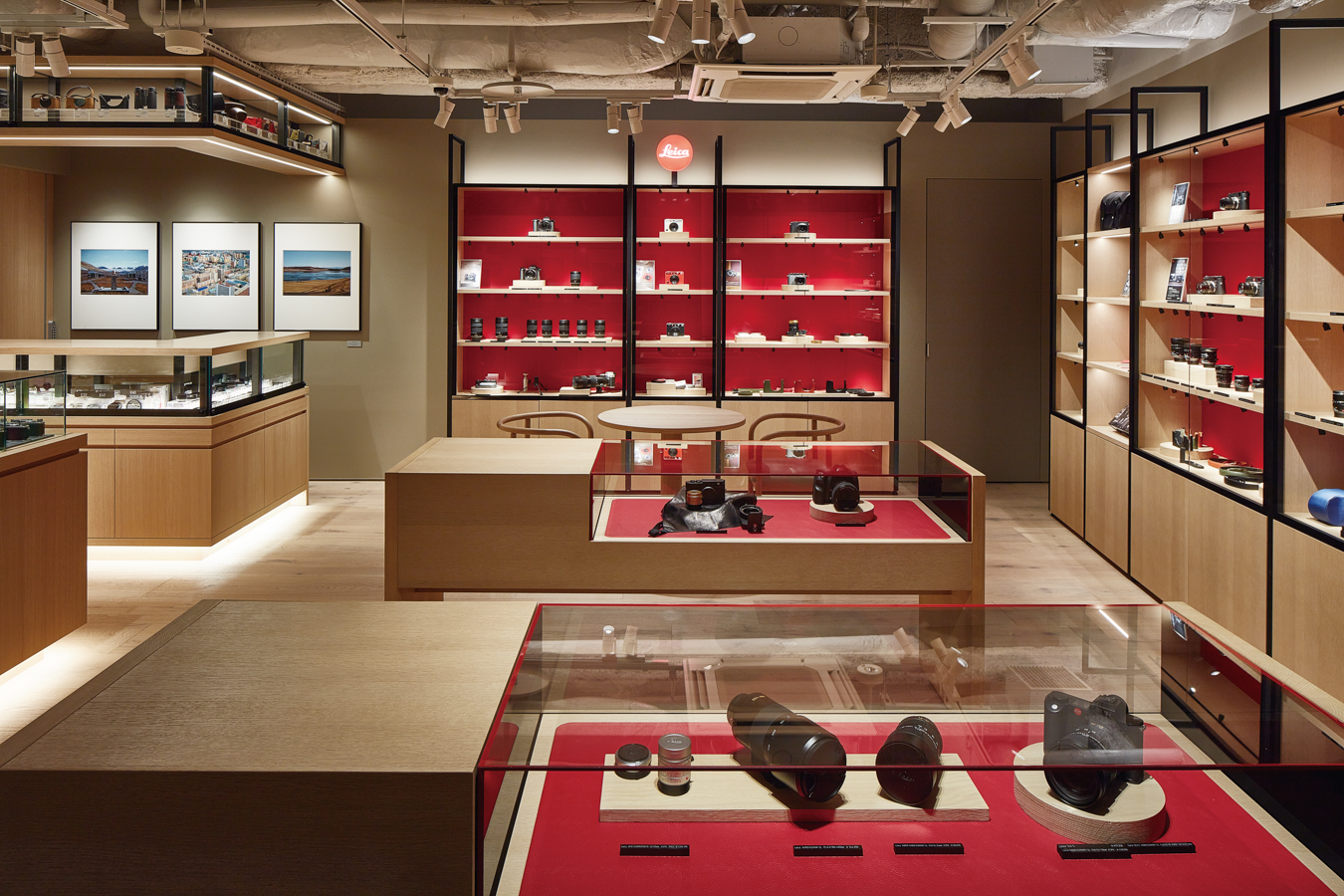
Introduction
“On June 21, 2024 (Friday), the Leica boutique, officially recognized by Leica Camera, opened on the 6th floor of the Kitamura Camera Store in Shinjuku, while the Basement Gallery, set to become a new hub for photography culture, was established on the B1 floor. The store continues to evolve as a place that supports all customers connected to a life with cameras, offering a fulfilling photo experience.
This article is the first volume of a two-part series introducing the charm of the Kitamura Camera Store in Shinjuku. Volume 1 highlights the newly opened Leica boutique on the 6th floor and the vintage salon that has been cherished since its inception.
So, what kind of space awaits you?”
A rare and special place filled with Leica models old and new
All of the products on the sixth floor of Building A are Leica-related. The right side is a boutique officially recognized
by Leica Camera AG, while the left side features secondhand Leica cameras, lenses, and accessories.

Boutique certified by Leica that offers various new Leica products. The combination of wood and the red accent color is a universal Leica specification. | ⓒJun Udagawa
The right side of the sixth floor of Building A underwent considerable renovations, and has been transformed into a boutique officially recognized by Leica Camera AG. Leica Boutiques are stores dedicated to selling new Leica products, with only stores that have passed a rigorous screening process by Leica Camera AG in Germany called as such. Now that the store has become a Leica Boutique, it is able to stock boutique-exclusive models in addition to the products it has handled in the past. The displays are a combination of pale wood and Leica red—the colors designated in the Leica Camera AG universal specifications. Arranged neatly on the displays are the latest models, from the Leica M11 to the Q3, SL3, and even the SOFORT 2 instant camera.
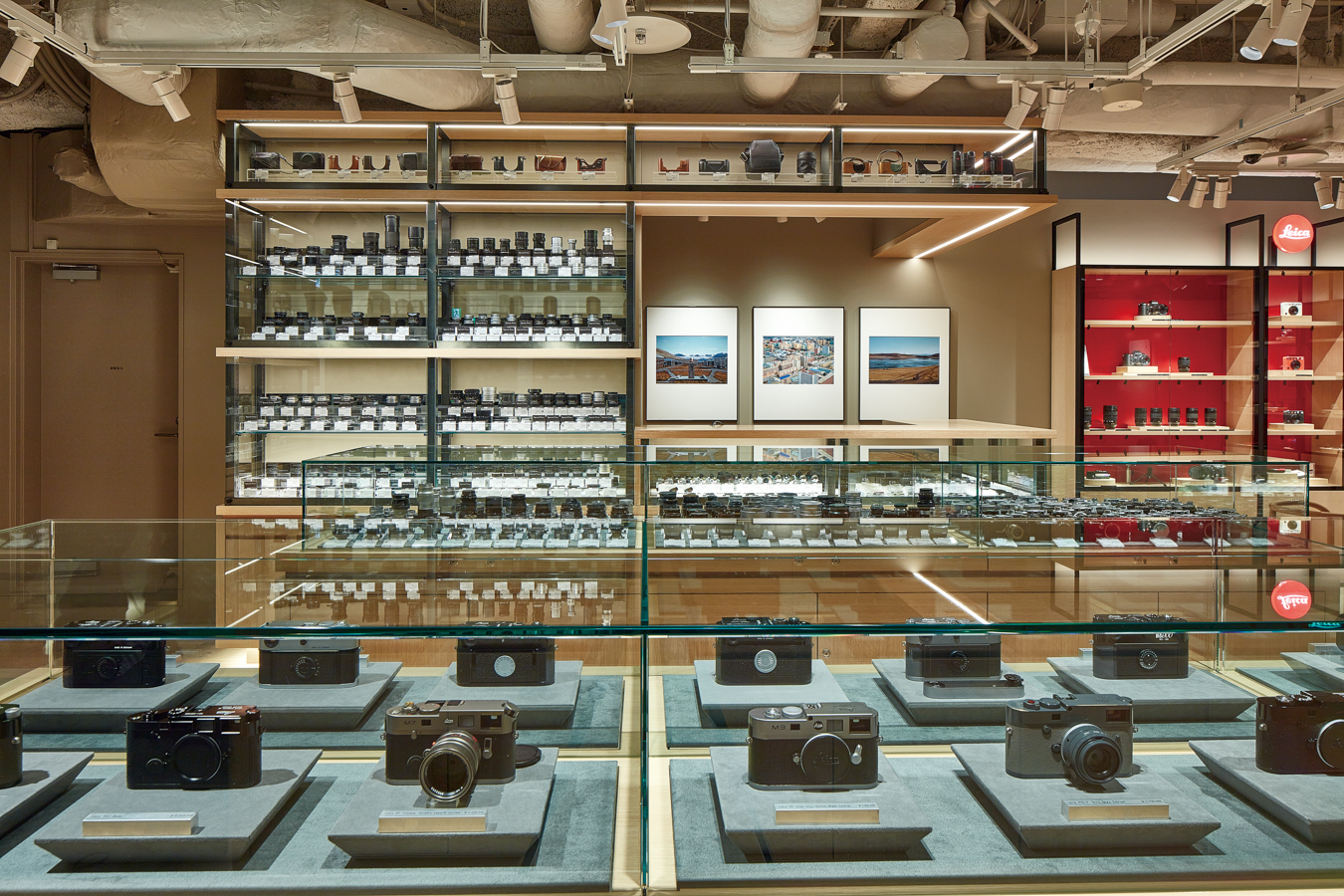
The space, filled with rows and rows of nearly 2,000 secondhand Leica cameras, lenses, and accessories, is an absolute sight to behold. | ⓒJun Udagawa
Connected seamlessly to the Leica Boutique is a space featuring rows and rows of secondhand Leica cameras, lenses, and accessories, with the condition of each item clearly marked. The displays are Kitamura Camera originals, and incorporate the wooden fixtures and glass cases that were used since the store first opened. The space, while distinct in that it handles secondhand products as opposed to new, blends harmoniously into the space of the Leica Boutique. Indeed, there are no other Leica Boutiques that have such a large secondhand sales area adjacent to them.
The products on sale span a history of nearly a century, from pre war screw mount lenses to digital systems released in the 2020s, and include rare limited-edition products that give off their own special aura.
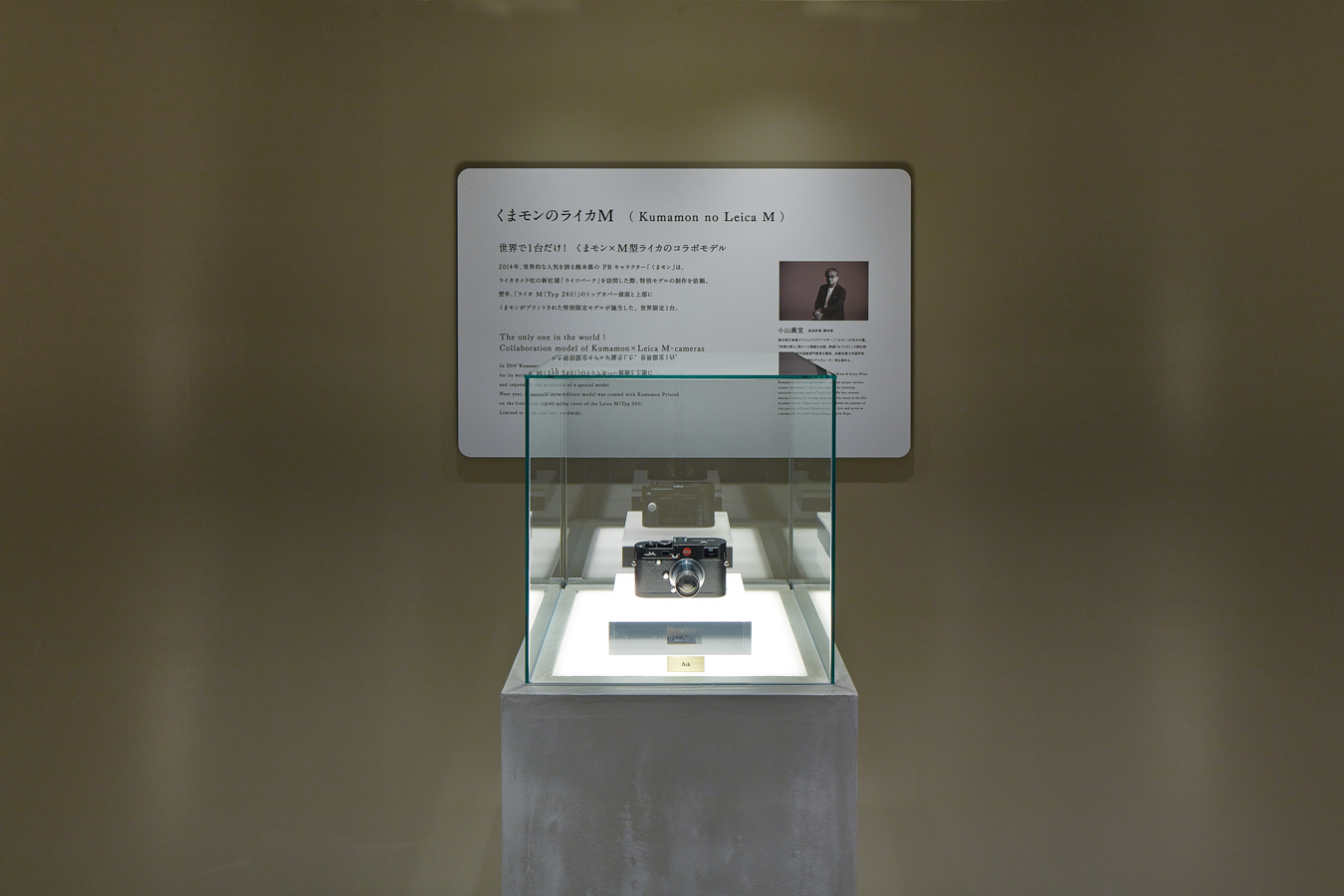
The special exhibit in front of the sixth floor stairs features the Kumamon no Leica M (Typ240), which was released in Japan as a limited-edition reference product—the only one of its kind. | ⓒJun Udagawa
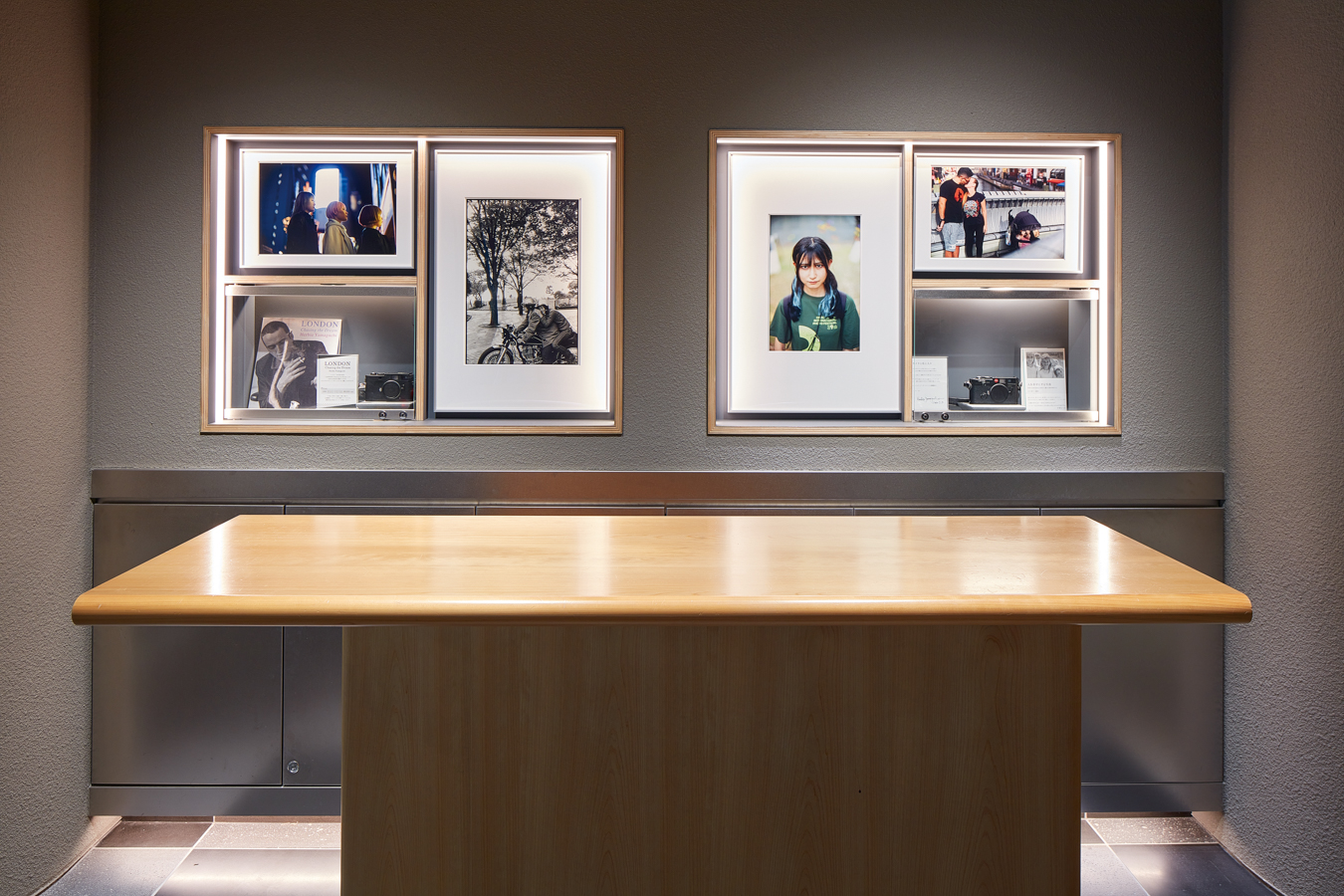
This corner features the works and favorite camera of photographer Herbie Yamaguchi, whose heartwarming style of photography—using Leica cameras—has earned him an enormous following. | ⓒJun Udagawa
Discover rare vintage Leica items
The Vintage Salon, located on the sixth floor of Building B, is a salon-like space that invites you into the deep and intricate
world of vintage cameras and lenses, with a museum-grade selection of Leica items that transcend space and time.
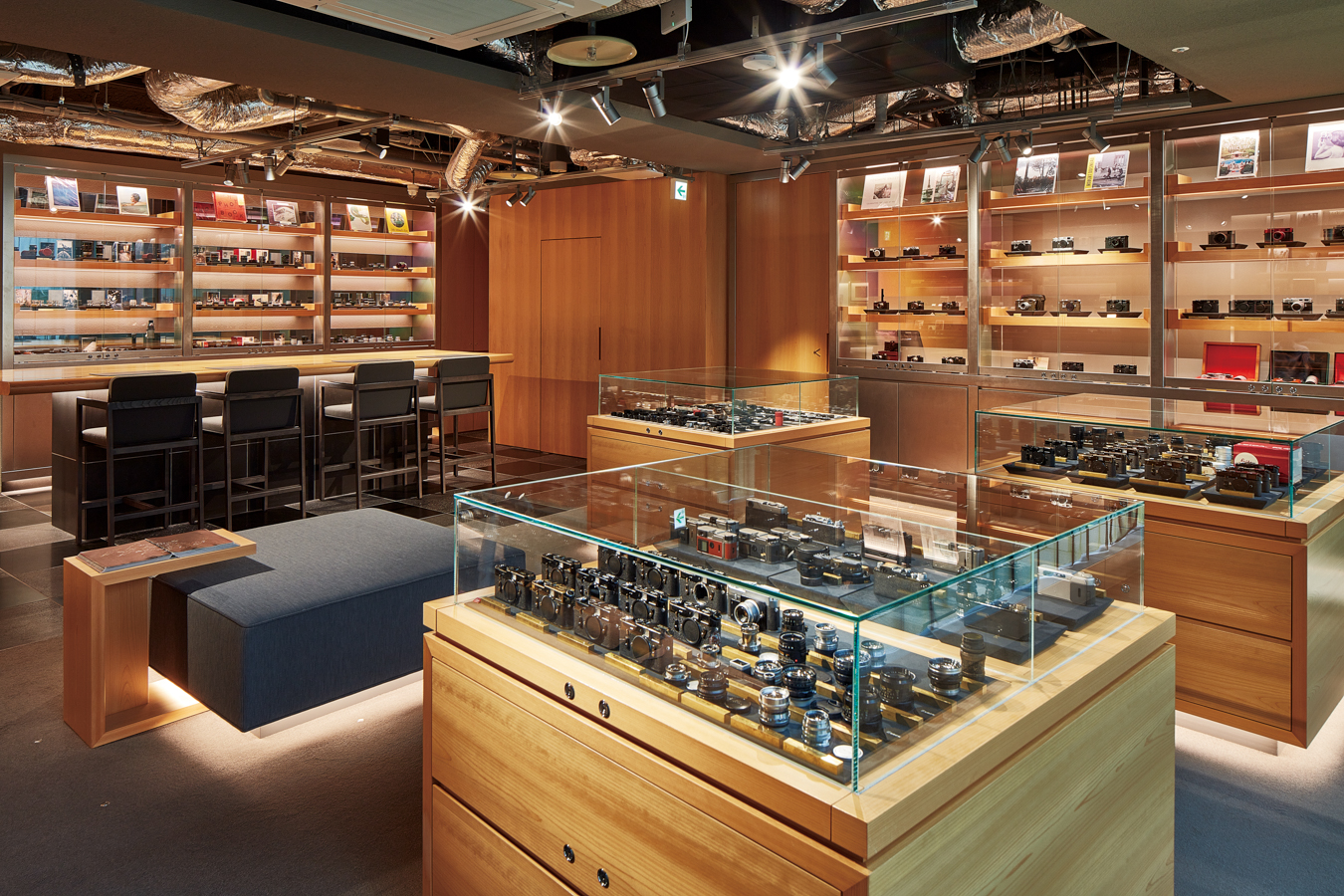
Rows and rows of famous and unusual items are displayed in a space lit by gentle natural light. Visitors can examine the items they are looking for at a bar counter-like table. | ⓒJun Udagawa
Connected through a passageway to Building A, which includes the Leica Boutique and secondhand sales area, is Building B—home to the Vintage Salon, which offers an even more in-depth perspective into the world of Leica. The Vintage Salon mainly handles Leica M film cameras and Leica camera interchangeable lenses. The difference between this store and the secondhand sales area in Building A is that it offers a curated selection of vintage items, including early models of each generation, items in better condition than those in the secondhand sales area, and extremely rare items. Their collection of black-painted Leica M film cameras in particular is so extensive that it will make you feel as if you are browsing through a Leica reference book. The Vintage Salon is also characterized by its in-store Leica specialists, who provide customers with expert knowledge—for instance, suggesting combinations of vintage cameras with interchangeable lenses released around the same time for increased M sensitivity, or having a small corner of the store dedicated to a selection of stylishly portable models.
The items offered in the Vintage Salon are not limited to the Leica brand. In addition to the very hobbyist-oriented Leica items, the store also alerts customers to the beauty of products like Teikoku Kogaku’s Zunow and Fujifilm’s Fujinon, and other rare and famous 20th-century Japanese screw mount lenses compatible with the Barnack Leica, as well as vintage lenses by Angénieux in France, which allows for a more diverse range of photographic styles due to their very different imaging tendencies from the
Leica lenses.
M3 Olive
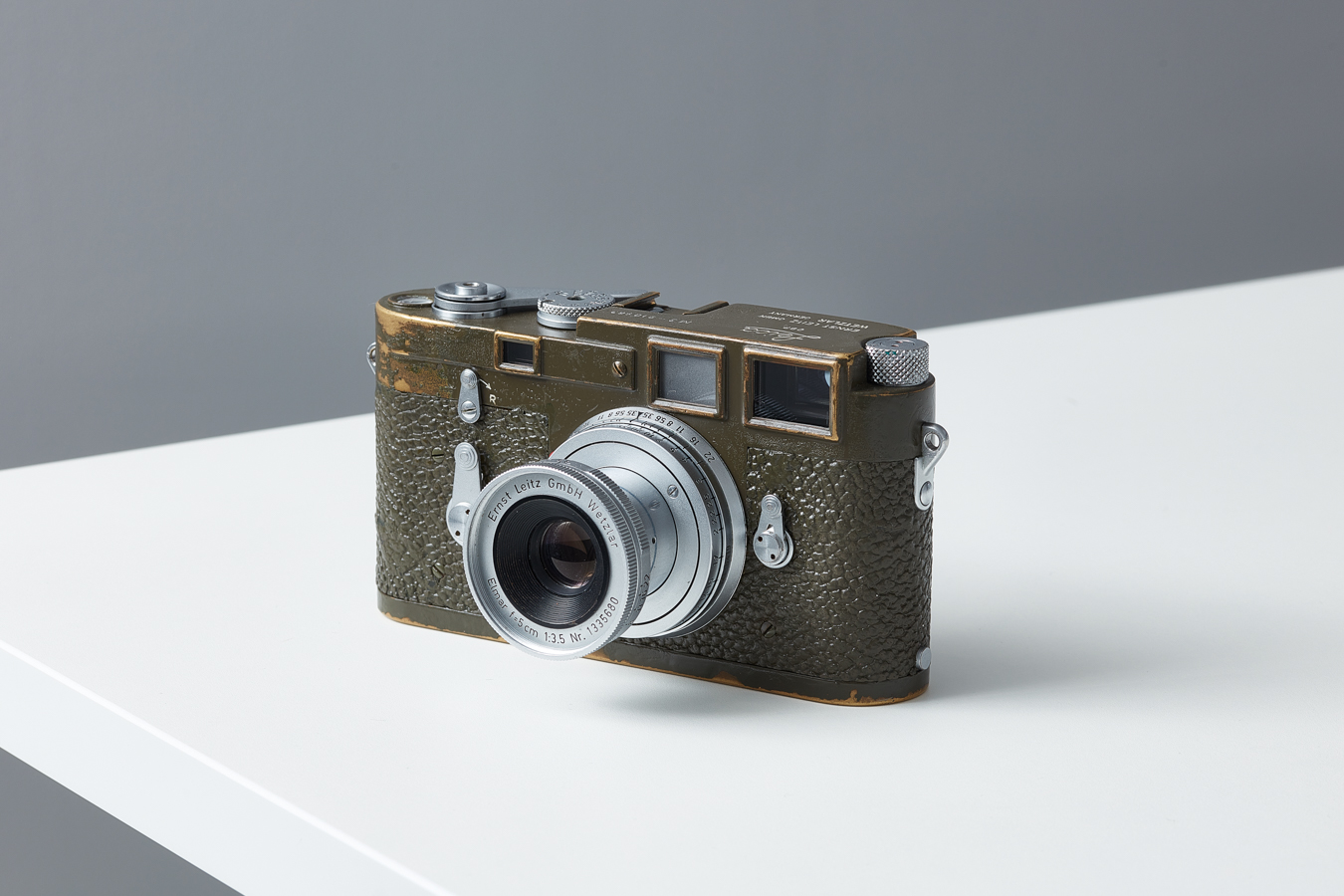
The 1957 model has a double stroke body. It is equipped with a lever for switching the finder frame and has large strapmount eyelets. The lens is an M-mount Elmar 5cm f3.5 | ⓒJun Udagawa
The Bund model, an ultra-rare model for the West German Army with a leather grain pattern
Both the body and lens are engraved with the word “Bundeseigentum (property of the Federal Republic of Germany).” The coarse grain leather pattern on the olive green guttapercha is ultrarare, found only in early lots of the model. The body and lens are engraved with the serial number.
IIIf Swedish Military
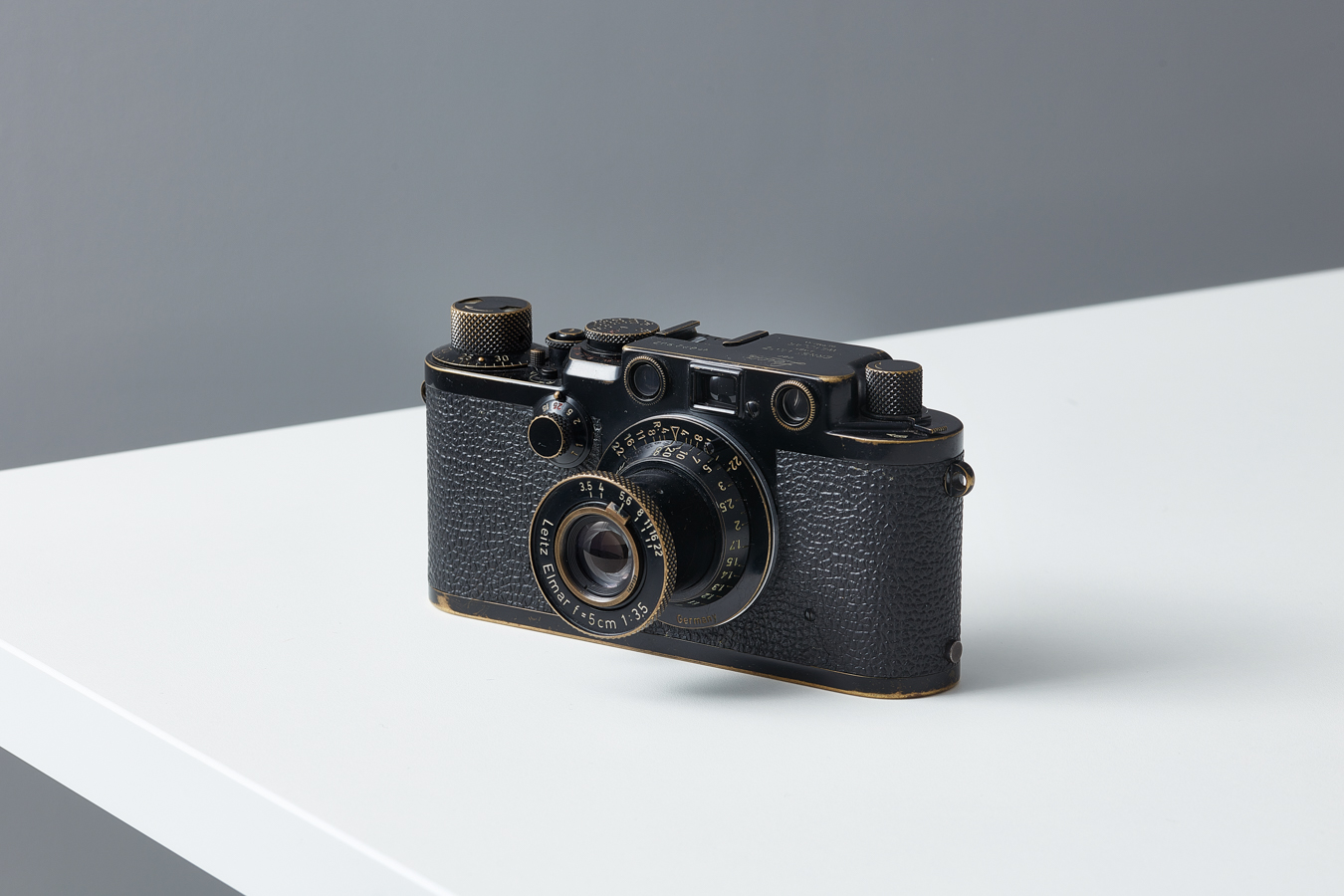
The 1956 body is a version of the Leica Barnack, equipped with a flashbulb mount, that has been revamped repeatedly since prewar times. A simple design without a self-timer. The lens is a φ39mm screw mount Elmar 5cm f3.5 | ⓒJun Udagawa
A super-celebrity of the military Leica world, painted all-black
One of the most famous military Leica models. The lens, the only black-painted screw mounted Elmar, is extremely rare, as it was sold only as a set with this military model. This particular camera is the second of the 100 that were said to have been manufactured.
M3 Black Paint
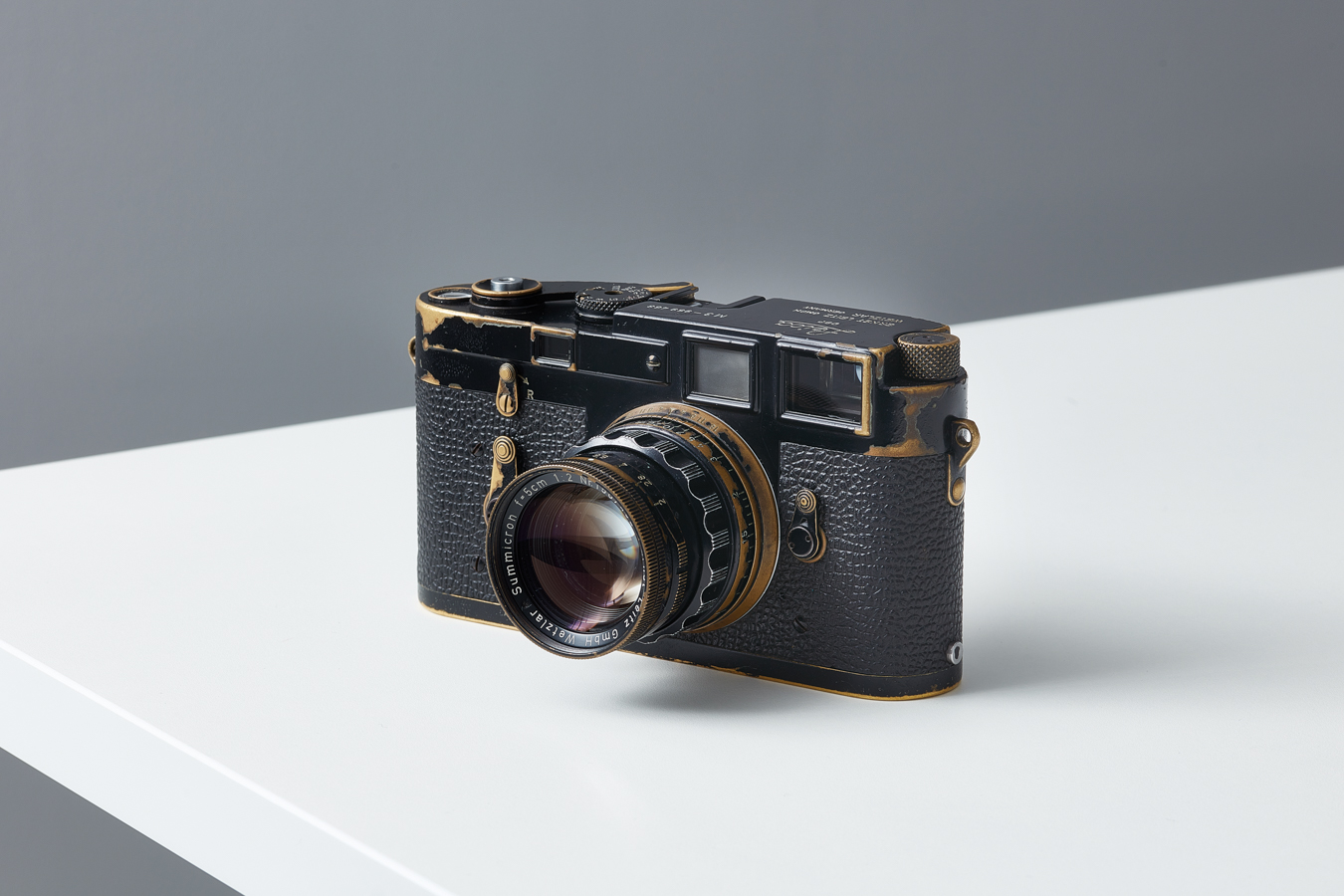
The 1959 model has a single stroke body, is equipped with a lever for switching the finder frame, and has large strap mount eyelets. The lens is an M-mount Summicron 5cm f2 | ⓒJun Udagawa
The top prize for camera hobbyists in search of black-painted Leica models
There were 100 black-painted Leica M3s manufactured in the first lot. This one is a rarity even amongst these, however, for its black instead of silver film counter. The strap brackets are also painted black.
To conclude
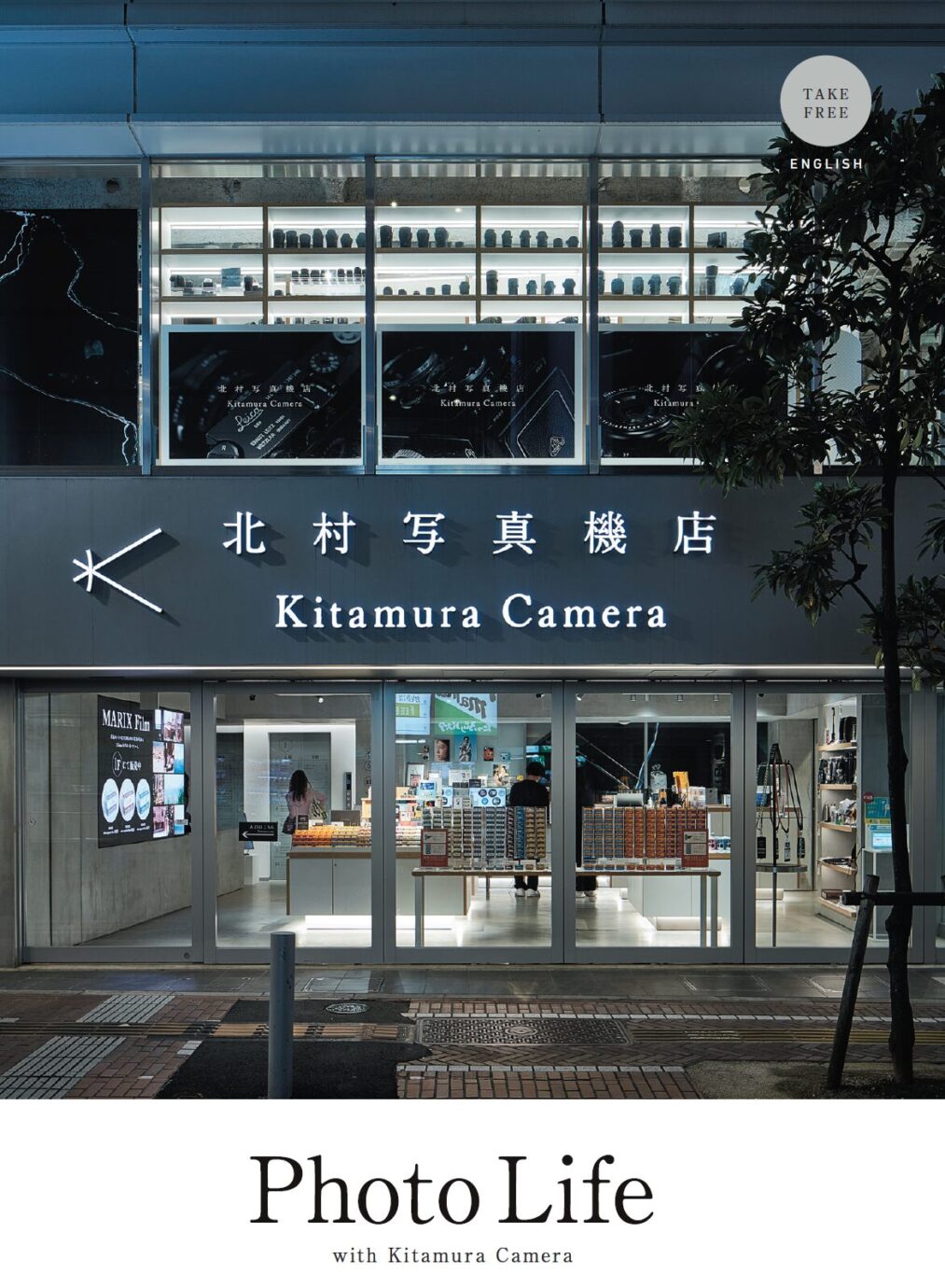
This interview is included in the booklet ‘Photo Life with Kitamura Camera Store, Shinjuku,’ published to commemorate the store renovation. The booklet is available in both Japanese and English versions at the store. We invite you to pick one up and take a look!”
Profile
■writer :GANDHARA INOUE
Writer. Born in 1964 in Nihonbashi, Tokyo. After graduating from Waseda University with a degree in social sciences, he worked for 13 years in the advertising division of Matsushita Electric (now Panasonic). In 2002, he became independent and has since navigated the worlds of magazines and web media, contributing to publications such as “mono magazine,” “BRUTUS,” “Pen,” and “ENGINE.” His first Leica was an M4 with a Summaron 35mm F2.8, which he received from the extensive collection of a childhood friend’s father. His published works include “30 Watches You Need in Life” (Iwanami Shoten) and “How to Create Zeiss & Voigtländer” (Genkōsha). He is also the planner and editor of the recently released “LEICA M11 Book” (Genkōsha).





